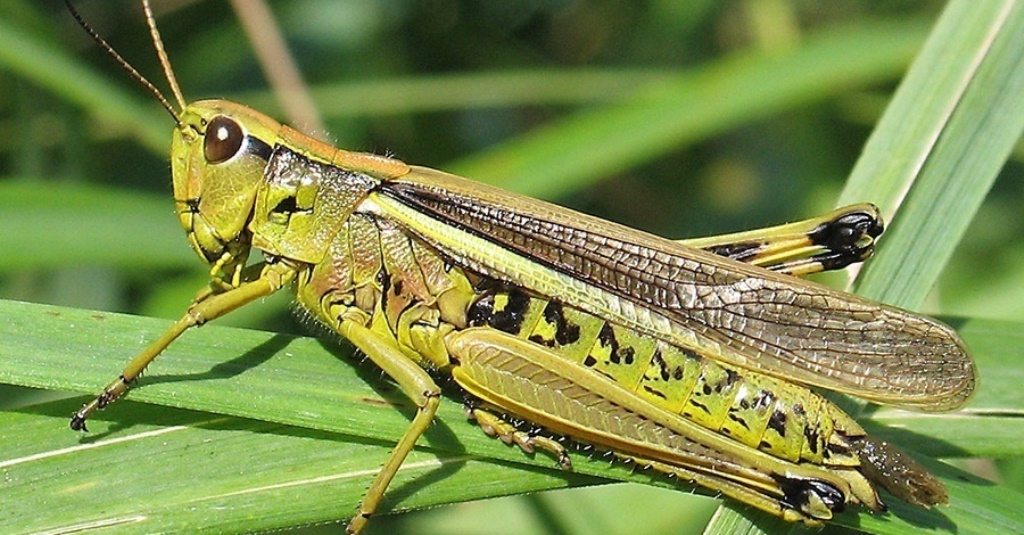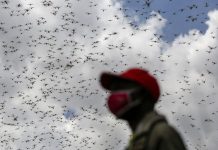AS swarms of locusts continue to ravage some parts of East Africa and threatening food security in the region, the government has said it is well prepared to contain the outbreak.
Speaking to the ‘africa-press’ yesterday, Minister for Agriculture, Mr Japhet Hasunga said being a member to the Desert Locust Control Organisation for Eastern African (DLCO-EA), Tanzania is also set to receive a helping hand from the entity should disaster strike.
The Desert Locust Control Organisation for Eastern Africa (DLCO-EA) is a regional organisation for integrated pest and vector management to ensure food security in Eastern Africa Region (Uganda, Kenya, Tanzania, Ethiopia, Sudan, South Sudan, Eritrea, Somalia, and Djibouti).
Mr Hasunga also disclosed the ministry’s initiative in the deployment of its experts in the borders to monitor the situation as well as mobilising a few pesticides in case of alarm.
According to him, usually special airplanes are used in the control of the swarms but this time around none is on standby in the country because they have been deployed in the affected sites in other member countries.
But, when need arises, the aircraft will be available to intervene in the management of the situation at hand, he said.
“As of Friday night no case had been reported in the country although speculations went viral of some parts in Longido being hit…but it was confirmed otherwise by experts who were deployed there. “We urge farmers to be always on alert if they manage to spot anything peculiar by notifying the relevant authorities,” said Mr Hasunga.
He added that efforts to prepare farmers and extension officers, among other members of the public in dealing with the predicament, were continuing.
He hinted, however, that if it turns out that the country manages to accumulate enough stock in its food produce, they will be glad to offer assistance to other countries by trading with them.
Again, considering that some parts of the regions experienced a shortage of rainfall, the plan was to strengthen the country’s abilities to protect the country from being attacked.
Meanwhile, reports revealed the attack is being regarded as the worst invasion in 25 years, posing a significant threat to the entire region’s food security.
The Food and Agriculture Organisation (FAO) in Nairobi said Ethiopia, Kenya, and Somalia are overwhelmed with the level of devastation the millions of locusts have inflicted.
It has been described in the reports that neighbouring country Kenya has not experienced a threat this large in 70 years.
The FAO suspects the heavy rains between October and December contributed to the spread of the locusts across the Horn of Africa.
They predict the swarms will continue until June and estimate it will take 70 million US dollars to control the outbreak.
However, the United Nations has released 10 million US dollars for aerial pesticide spraying in response to the worst locust outbreak in decades to hit some part of East Africa, a UN spokesman said on Thursday.
The said money has been released from the UN Central Emergency Response Fund (CERF), thus the allocation will go to the Food and Agriculture Organisation, the UN food agency, to fund an increase in aerial pesticide spraying operations.







